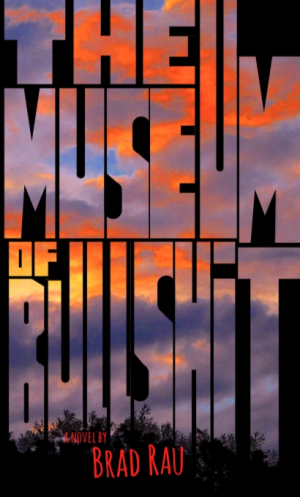The Museum of Bullshit
Thoughtful in its turns, The Museum of Bullshit features lush settings and just a dash of fantasy.
Seeing does not always equal believing in Brad Rau’s offbeat novel The Museum of Bullshit.
Louis is desperate to restart his writing career, and he’s found the perfect subject for a new book: Lydia, a jaded cryptozoologist who’s spent her life searching for Bigfoot. With the questionable help of a man claiming to be a descendant of the Sasquatch clan, Louis and Lydia set off on an expedition to find proof of Bigfoot’s existence. But the tension between Louis and his reluctant subject is just as big of a threat to their mission as are bad weather and con men.
Adding to Louis’s professional difficulties is the tension between he and Lydia. Their different perspectives on, and experiences with, racial bias form a barrier between them. Louis, who is black, spent years selling his soul as a talking head for a right-wing propaganda outlet, and his attempts to make peace with his past speak to central themes regarding lies and the people who profit from them. Long, uncomfortable discussions about race ensue; Louis admits to insincerity during most of them. The characters are conflicted, confused, and question every choice they’ve ever made—they are as human as Bigfoot is inhuman.
More about its characters’ growth than the strangeness of their mission, the book switches perspectives early on, making it difficult to determine who the lead is. Once the story settles on Louis, it becomes a quiet and intimate tale. Poetic turns of phrase and arresting descriptions capture the story’s dreary Washington winter as a gray atmosphere settles over it, just like the rainstorms that plague the Olympic Peninsula. When Louis and Lydia go on an extended hike through snowy terrain, the story goes from gray to black and white, with mystery and menace lurking behind every snow-covered hill and every icy, black tree branch. Minimalist black-and-white illustrations of important moments reinforce these moods.
A conflict in Lydia’s marriage is introduced late in the story, but to little effect. Louis’s relationship with his fiancée is underdeveloped though he cites her as a primary motivator. Aside from these factors, the ending resolves all outstanding issues. The remaining ambiguity surrounding Bigfoot’s existence may frustrate some, but finding Bigfoot was never the point. The true resolution comes during a high-stakes moment when Louis and Lydia, alone in the wilderness and on the brink of despair, confront their own faults and acknowledge the humanity they share behind their prickly, stubborn exteriors.
With lush settings and just a dash of fantasy, The Museum of Bullshit is about the consequences of the lies that people tell each other and themselves.
Reviewed by
Eileen Gonzalez
Disclosure: This article is not an endorsement, but a review. The publisher of this book provided free copies of the book and paid a small fee to have their book reviewed by a professional reviewer. Foreword Reviews and Clarion Reviews make no guarantee that the publisher will receive a positive review. Foreword Magazine, Inc. is disclosing this in accordance with the Federal Trade Commission’s 16 CFR, Part 255.

